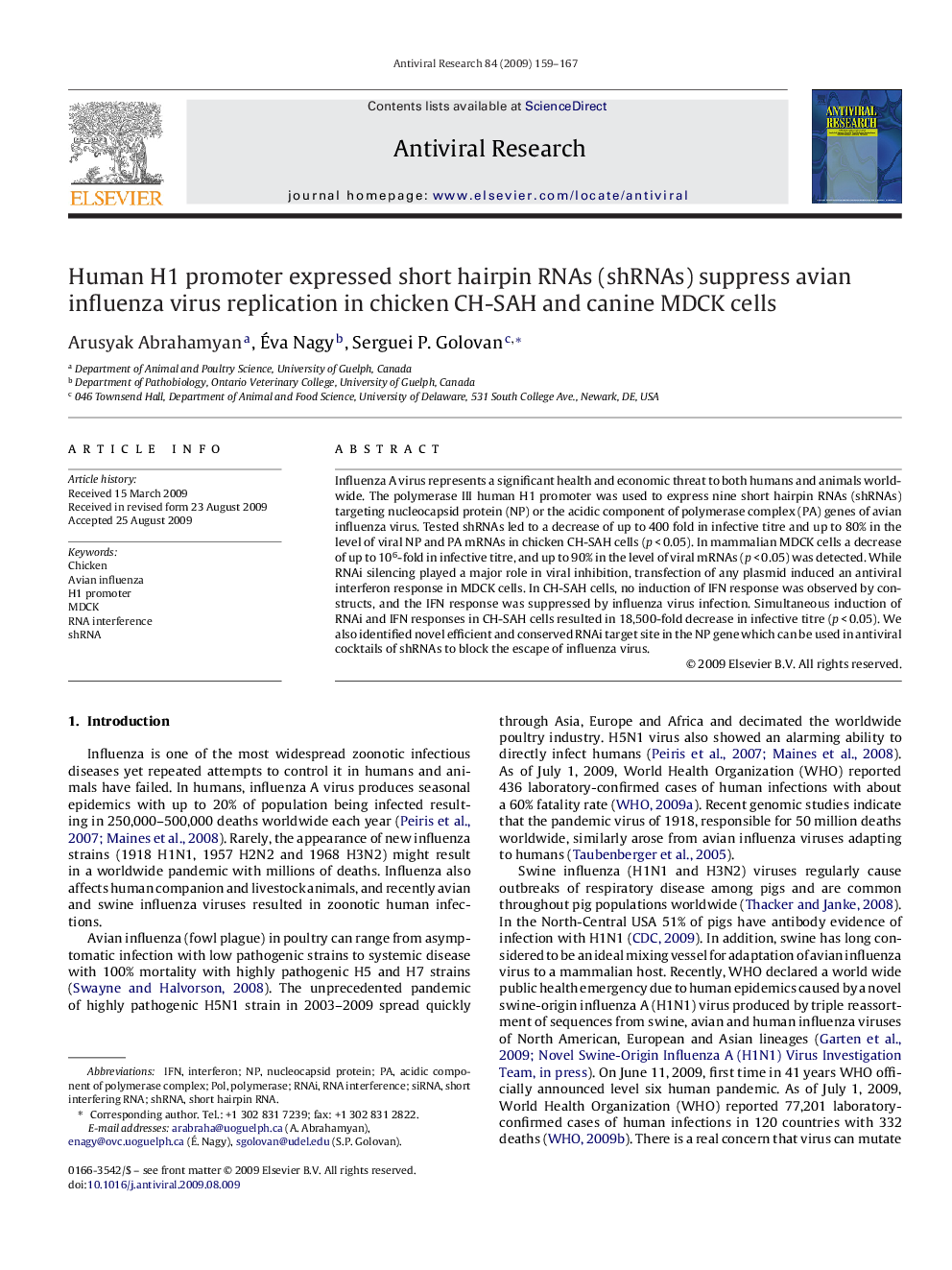| Article ID | Journal | Published Year | Pages | File Type |
|---|---|---|---|---|
| 5823033 | Antiviral Research | 2009 | 9 Pages |
Influenza A virus represents a significant health and economic threat to both humans and animals worldwide. The polymerase III human H1 promoter was used to express nine short hairpin RNAs (shRNAs) targeting nucleocapsid protein (NP) or the acidic component of polymerase complex (PA) genes of avian influenza virus. Tested shRNAs led to a decrease of up to 400 fold in infective titre and up to 80% in the level of viral NP and PA mRNAs in chicken CH-SAH cells (p < 0.05). In mammalian MDCK cells a decrease of up to 106-fold in infective titre, and up to 90% in the level of viral mRNAs (p < 0.05) was detected. While RNAi silencing played a major role in viral inhibition, transfection of any plasmid induced an antiviral interferon response in MDCK cells. In CH-SAH cells, no induction of IFN response was observed by constructs, and the IFN response was suppressed by influenza virus infection. Simultaneous induction of RNAi and IFN responses in CH-SAH cells resulted in 18,500-fold decrease in infective titre (p < 0.05). We also identified novel efficient and conserved RNAi target site in the NP gene which can be used in antiviral cocktails of shRNAs to block the escape of influenza virus.
